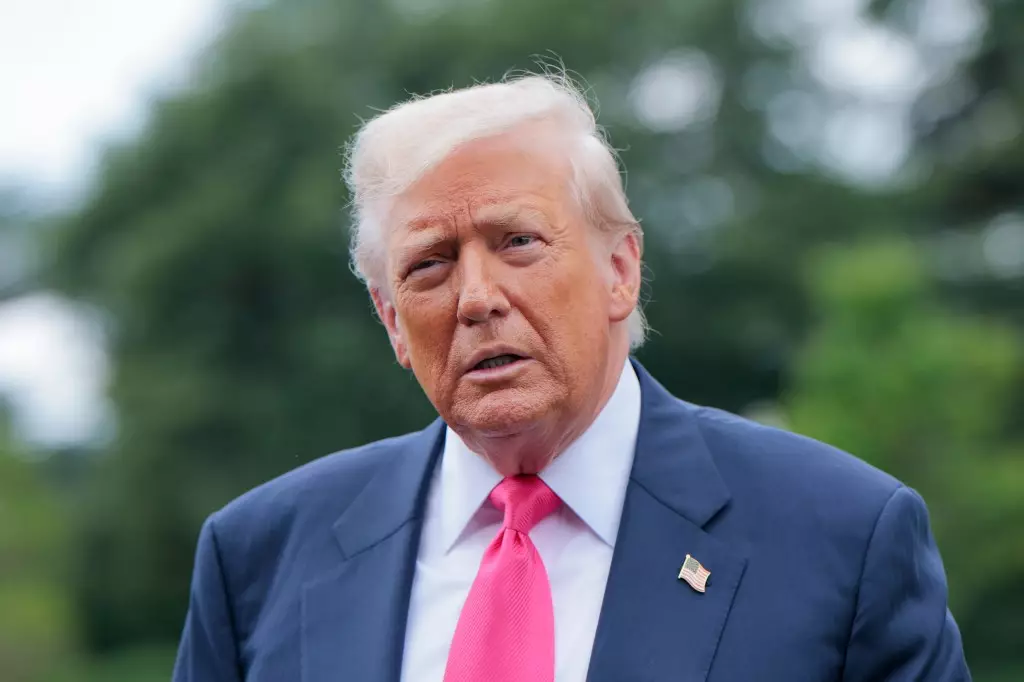In recent months, tariffs have surged from mere trade policy instruments to potent weapons wielded in the arsenal of geopolitical strategy. Under Donald Trump’s leadership, the United States has pivoted toward an aggressive tariff stance, signaling a shift that resonates far beyond mere economics. The imposition of new tariffs on over 90 countries illustrates a desire to reshape global trade relations, often at the expense of diplomatic harmony. This approach highlights a broader trend where tariffs serve not just as economic levers but as symbols of assertive American nationalism. The rhetoric surrounding these tariffs often conflates economic protectionism with political dominance, thereby fueling national pride even as trade disruptions threaten long-term relationships.
The recent escalation against Canada exemplifies this complex interplay. By hiking tariffs on Canadian goods from 25% to 35%, the U.S. under Trump sent a clear message: economic policies are now intertwined with political negotiations. The reaction from Canadian officials, especially Prime Minister Mark Carney’s call for retaliation and their emphasis on being their own best customers, underscores the fragile state of North American trade. For Canada, the tariff increase is a wake-up call—an indication that the U.S. no longer sees trade as a collaborative enterprise but as a strategic battleground. This dynamic hints at a broader erosion of the multilateral trade framework, replacing it with unilateral actions that prioritize short-term leverage over mutually beneficial agreements.
Moreover, Trump’s flirtation with the idea of annexing Canada—an idea that plays on the fringes of absurdity—reflects an underlying desire to challenge traditional notions of sovereignty in pursuit of dominance. Criticisms of Canada’s recognition of Palestinian statehood further complicate the picture, portraying diplomatic disagreements through the lens of economic conflict. Such actions emphasize how tariffs are used as tools to influence international policy, blurring the lines between trade disputes and ideological battles.
Economic Ripple Effects: The Costs of Tariff Warfare
Beyond the geopolitical chessboard, tariffs are already visibly impacting the U.S. economy. Recent data paints a concerning picture: job growth in July was an anemic 73,000, revised downward from initial reports, and is accompanied by stagnant or declining employment in certain sectors. The entertainment industry, which one might assume would remain resilient, shows only modest gains in specific segments such as motion pictures and music. This stagnation underscores that tariffs do not operate in isolation—they ripple through supply chains, influence consumer prices, and ultimately slow economic momentum.
Inflationary pressure is also mounting. With tariffs pushing up the costs of imported goods—be it from Canada, Brazil, or Asian nations—American consumers face higher prices on everyday items. The 50% tariff on Brazil, linked to political tensions, exemplifies how tariffs have become intertwined with U.S. foreign policy whims. These steep levies raise concerns about a potential surge in living costs, which could dampen consumer spending, a key driver of economic growth.
The uncertainty created by this tariff frenzy is feared to be more damaging than the tariffs themselves. Business leaders remain cautious, hesitant to expand or hire until the trade environment stabilizes. This cautious stance threatens to stifle innovation and reduce investment, thereby st1alling the very growth that proponents of tariffs often claim to protect. The economic landscape is tense: a fragile balance exists between protecting domestic industries and risking a retaliatory spiral that could hinder global supply chains and harm American competitiveness.
The Ebb and Flow of Global Trade Tensions
The international response to America’s tariff policies has been mixed, but a common theme emerges: apprehension. The European Union’s recent agreement to face 15% tariffs on certain goods signals a willingness to find a compromise, yet it’s clear that tensions persist. The global market remains on edge, as tariffs threaten to derail long-established trade relations, especially with countries like Japan and South Korea, which now face 15% levies.
Meanwhile, the legal challenges against Trump’s tariff policies further complicate the landscape. An American appeals court’s investigation into the legality of these tariffs exposes the fragile legal footing President Trump’s strategies often stand on. Many see the tariff deployment not only as a political move but also as potentially unlawful, casting a shadow over their long-term legitimacy.
Attempts to introduce tariffs on movies from outside the U.S., although quiet in recent times, continue to loom as a potential flashpoint. This sector—rich with cultural influence—could be collateral damage in trade confrontations if tariffs escalate as a form of soft power or economic retaliation.
In essence, this era of tariff-driven policy reflects a tumultuous shift toward economic nationalism that risks undermining centuries of international cooperation. It’s not merely a matter of protecting industries or achieving trade negotiations—these tariffs symbolize a broader confidence crisis, where economic tools are wielded more aggressively and less predictably, risking the kind of global instability that could take years to undo.

